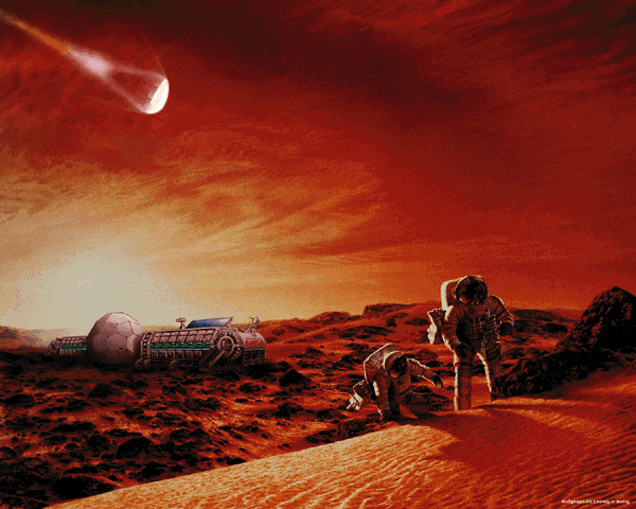Could we grow a garden in the soils of Mars and the Moon? A new study digs down deep into the interstellar dirt and says that, yes, the soil up there is capable of supporting plant germination. In fact, it might even be as good as some of the poorer soils here on Earth.
The first challenge faced by researchers at Wageningen University in answering the question was where to acquire said space soils, a problem they solved by using simulated soil that mirrored the composition of soil as analyzed on missions to Mars and the Moon. As a control, they also pulled some nutrient-poor Earth soil from deep underground along the banks of the River Rhine.
While the simulated soils had some peculiarities — the lunar soil, in particular, had such a high pH that researchers wondered if anything would grow in it at all — there was also enough overlap in the mineral content to lead researchers to believe that the plants could at least sprout. At the end of 50 days, researchers found that not only were the plants in lunar and Martian soils still living, they had also hit some important markers of plant health, such as producing flowers and seeds. While every soil was capable of supporting plant germination, however, they were not all equally good.
The moon soil had, by far, the poorest results. Martian soil, however, did quite well, showing better results than the lunar soil in numbers of leaves formed, seeds, flowers, plant size, and in the number of plants still alive at end of 50 days. In a surprise twist, the plants grown in the Martian simulant actually also did better than the plants grown in the nutrient-poor Earth soil, with the Martian-grown plants growing significantly larger. Of course, not every plant would grow in the simulated soils. Attempts at growing common vetch (a legume commonly used as livestock feed) failed utterly in both the Martian and lunar soils. Still, researchers were able to successfully sprout tomatoes, wheat, cress, and field mustard.
Before you get too excited about gearing up for your Martian harvest, though, a note of caution: While the results of the soil tests are promising, we're still a long ways away from the space vegetable garden of our dreams. Among the issues still to be resolved include how to get water to the plants, how to control temperatures, whether the amount of light will be appropriate for photosynthesis, and what the different levels of gravity might do to plant growth.
And then, of course, questions also remain about just how close the soil simulant used in the tests is to mirroring actual on the ground conditions. For instance, while nitrogen is present in our own soil due to the breakdown of organic matter, the researchers say that the nitrogen that we could expect to find on Mars could come from much more exotic sources, including from solar winds or as a result of lightning or volcanic activities. While that does suggest the presence of usable nitrogen, it doesn't tell us much about the levels we might expect to find. There are, as the researchers note, still a number of unanswered questions to explore before we can begin planting:
Our results show that it is in principle possible to grow plants in Martian and Lunar soil simulants although there was only one plant that formed a flower butt on moon soil simulant. Whether this extends to growing plants on Mars or the moon in full soils themselves remains an open question. More research is needed about the representativeness of the simulants, water holding capacity and other physical characteristics of the soils, whether our results extend to growing plants in full soil, the availability of reactive nitrogen on Mars and moon combined with the addition of nutrients and creating a balanced nutrient availability, and the influence of gravity, light and other conditions.
You can read the whole scientific paper over at PLoS One.
Image: Artist's concept of Martian settlement / NASA




No comments:
Post a Comment